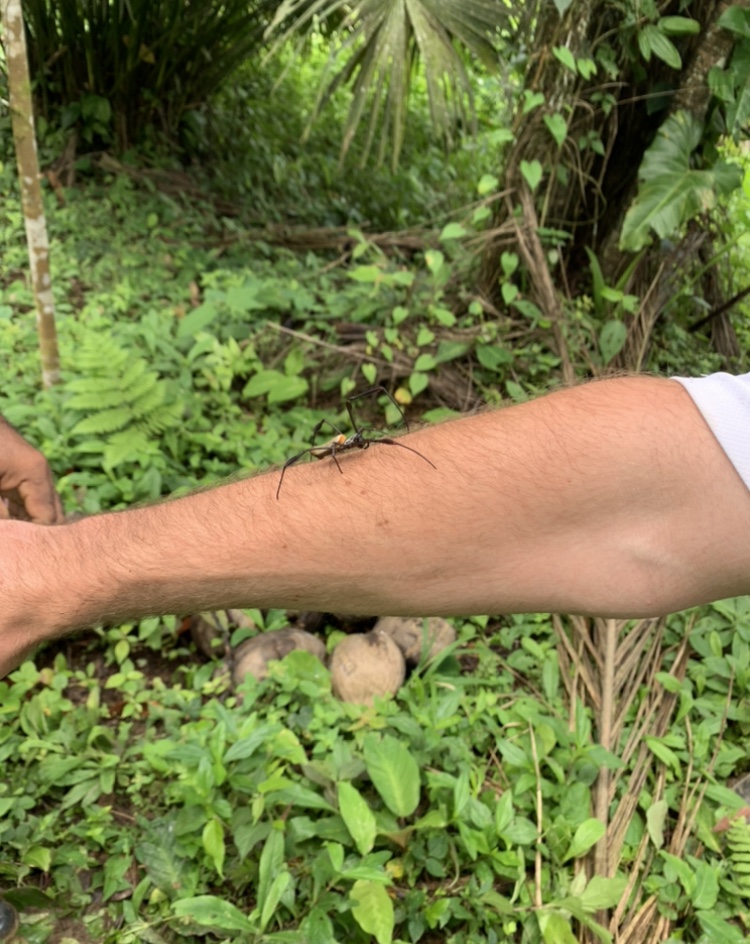I spent the last week on “vacation” in Ecuador. And by vacation I mean semi-frantically searching for (inventing) things to work on. I’ll get to that in a future essay.
For now, here are two lessons on overcoming fear…
This was a favorite parts of the trip. We stumbled on this spider on our jungle tour and, obviously, handled it with a complete lack of composure. Our guide took notice, corralled the spider, and said “vamos a acabar su miedo…”
“We’re gonna get rid of your fear.”
Lesson 1 – Is it poisonous?
Our guide recognized that while this spider looked like a threat, it wasn’t poisonous.
Just because something looks like a threat doesn’t mean it is. This lesson holds true outside the jungle. There are a lot of non-poisonous spiders in life. In fact I’d wager that most of our fears, outside of death or injury, are this way.
Here’s a shortlist of fears that, like a bite from this spider, might sting but won’t really hurt us.
- rejection
- public failure
- social interaction
- losing/quitting/changing your job or major
So next time you feel fear or anxiety ask yourself is this spider actually poisonous?
Disclaimer: once in awhile the answer is yes.
Lesson 2 – Exposure Therapy
The concepts of conditioning and tolerance are two of the most under appreciated elements of the human experience.
I think of conditioning as the increasing of capacity or tendency through repeated exposure. With physical conditioning, we consistently expose the body to increased physiological pressure and it strengthens in response. With mental conditioning (see neuroplasticity) we repeatedly engage in a certain cognitive process and as a result we increase our tendency towards that cognitive process (and our physical brain changes to support it).
I think of tolerance as the intensity of the experience of a sensation or stimuli. Children have a low tolerance for pain. Smokers have a high tolerance for nicotine.
Through the process of conditioning we can increase our tolerance. With repeated exposure to anything the intensity of our experience of it diminishes. This is why weightlifters don’t struggle with muscle soreness and drinkers need quite a few drinks to get drunk.
Going back to the spider, after letting her crawl up my arm and head for awhile, it wasn’t so bad.
This leads me to concept of “fear tolerance”. With repeated exposure to a fear or anxiety inducing trigger, we condition ourselves into an increased fear tolerance.
Think of a beekeeper’s fear tolerance of bees compared to the average person’s or the tightrope walker’s fear tolerance of heights.
The way to overcome fear and anxiety it to run towards it not away from it. With repeated exposure to it, we build up a tolerance. And after awhile it’s not so bad.
Here are a few discomfort workouts to build your tolerance.
- talk to one stranger per day
- once per week knock on a random person’s door and try to talk to them (I usually do this leading up to first dates / job interviews)
- cold showers / ice baths
When dealing with fear or anxiety exposure therapy is the most thorough approach I’ve found…

